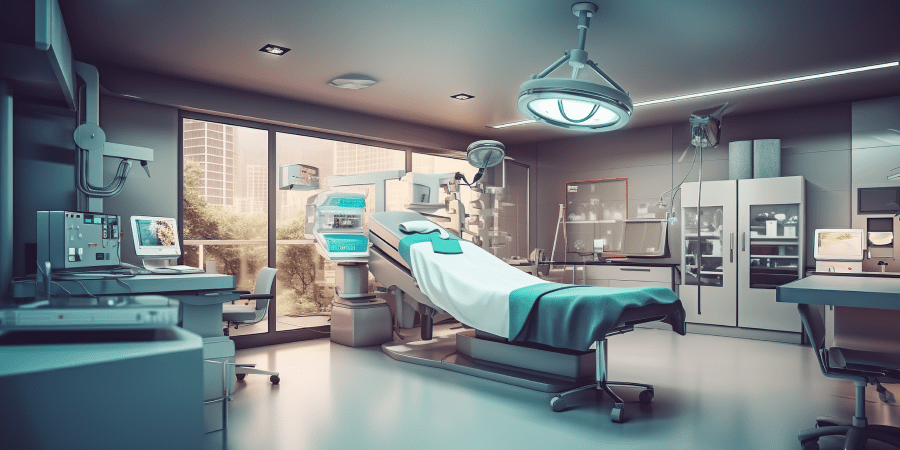In today’s world, we’re all looking for ways to be...
When it comes to designing hospitals, the landscape is rapidly evolving, and keeping up with the latest trends is essential. If you’re an architect or involved in healthcare planning, understanding the future of hospital design is more important than ever. Today’s hospitals go far beyond merely providing a place for medical treatment; they’re becoming spaces that prioritize patient comfort, integrate cutting-edge technologies, and support both environmental sustainability and community engagement. No matter. you’re planning a new healthcare facility or renovating an existing one, incorporating the latest architectural innovations can greatly enhance the hospital’s functionality, efficiency, and atmosphere.
In this blog post, we’ll explore essential trends that are defining the future of hospital architecture. These trends will redefine how hospitals are built and experienced.No matter if you’re a healthcare professional, an architect, or someone keen on the evolution of medical facilities, stay with us to uncover how these innovative trends are revolutionizing hospital design.
Key Hospital Design Trends Shaping Healthcare’s Future
Hospital design is evolving rapidly to meet the demands of modern healthcare and the expectations of patients. Here are some key trends shaping the future of hospital design:

1. Embracing a Comfortable Atmosphere
Creating a comfortable atmosphere in hospitals is no longer just a nice-to-have; it’s becoming essential in modern healthcare design. Instead of the traditional sterile and cold environments, hospitals should focus on warmth and comfort for. Using soft lighting, inviting seating areas, and calming color schemes are some of the best design tips to give hospitals a professional makeover. This approach doesn’t just improve aesthetics; it directly contributes to patient well-being, helping to reduce stress and promote faster recovery. As hospitals continue to evolve, designing with comfort in mind is transforming the patient experience, making hospitals feel more like a place of healing and less like a place of fear.
2. Use Antimicrobial-Based Raw Materials
When considering the future of hospital design, architects should seriously incorporate antimicrobial-based materials to enhance infection control and promote safety and hygiene. Rather than depending solely on constant cleaning, using materials that naturally resist bacteria and viruses can make a huge difference. For designing countertops, door handles, and flooring with built-in antimicrobial properties can actively reduce the spread of infections. It’s a smart move that not only meets health standards but also gives patients and staff peace of mind. When you integrate antimicrobial-based raw materials into your designs, you’re not just building hospitals, you’re creating safer, more resilient healthcare environments for the future.
3. Next-Gen Wayfinding
Wayfinding transforms how we navigate hospitals, and and it’s clear why they’re a key trend. Hospitals are now integrating advanced technologies like interactive kiosks, mobile apps, and augmented reality to make navigating their complex layouts a breeze. These tools provide real-time navigation and detailed digital maps, significantly reducing the stress and confusion often associated with hospital visits. With smart solutions, hospitals can enhance the patient and visitor experience, streamline operations, and create more intuitive, user-friendly environments. Wayfinding is a smart move towards making healthcare facilities more accessible and efficient for everyone.
4. Natural Light and Greenery
Natural light and greenery create a welcoming and healing environment in modern hospital design. Bright, sunlit spaces and lush, indoor plants can significantly enhance a patient’s mood and overall experience. Architects should focus on maximizing natural light by incorporating large windows, skylights, and open layouts that allow sunlight to flood in. Adding green spaces, such as garden areas or green roofs, provides serene spots for patients and visitors to relax. Inside, integrating indoor plants or green walls can further improve the atmosphere. When you incorporate natural elements into hospital designs, you create spaces that are both beautiful and supportive of healing.
5. Child-Friendly Design
Kids don’t like hospitals, and that’s why making them child-friendly is a big deal in modern design. Hospitals are moving away from the traditional, intimidating look and are now focusing on creating spaces that kids actually enjoy. Add vibrant colors, fun themes, and play areas where kids can let off some steam before their appointment. Also, including elements like kid-sized furniture, interactive displays, and engaging activities helps make the environment less stressful and more welcoming. Moreover, incorporating comfortable waiting areas in hospitals ensures that both kids and their families feel more relaxed. Child-friendly designs make the experience feel less like a medical ordeal and more like a caring visit for everyone involved.
6. Hospital Scale Integration
Hospital scale integration is all about making sure different parts of a hospital work seamlessly together, and it’s becoming a crucial trend in hospital design. It’s not just about designing individual spaces but creating a flow where everything connects smoothly, from emergency rooms to outpatient clinics and everything in between. This approach helps streamline operations, reduce patient wait times, and improve overall efficiency. For architects, this means thinking about how different departments interact and making sure that the layout supports easy movement and clear communication. When you integrate the scale of hospital design, you’re not just creating a functional building; you’re building a cohesive system that enhances patient care.
7. Advanced Technology Integration
We are living in a digital era, and advanced technology integration is revolutionizing hospital design. With smart monitoring systems, AI-driven diagnostics, and telemedicine platforms becoming standard, hospitals are using cutting-edge tech to enhance patient care and streamline operations. Real-time data helps doctors make quicker decisions, while virtual consultations reduce the need for in-person visits. Architects should integrate technology into hospital designs seamlessly, including tech-ready patient rooms and sophisticated control centers. Embracing latest trends can significantly improve the effectiveness and responsiveness of healthcare delivery.
8. Sustainable Construction
Sustainable construction is all about building with the future in mind. With growing environmental concerns, hospitals should embrace eco-friendly practices like using renewable materials, optimizing energy efficiency, and obtaining green building certifications. This means incorporating features such as solar panels, rainwater harvesting systems, and energy-efficient HVAC systems, which can significantly reduce the facility’s carbon footprint and lower operating costs. Architects need to design spaces that prioritize sustainability while maintaining functionality. By focusing on these green practices, hospitals can lead the way in responsible construction and set a new standard for environmental stewardship in healthcare.
Wrapping Up
The future of hospital design is being shaped by trends that focus on enhancing patient experience, integrating advanced technologies, and promoting sustainability. By staying informed about these key trends, architects and healthcare professionals can create facilities that are not only functional and efficient but also supportive of holistic health and well-being. To navigate these evolving trends effectively and ensure your designs are at the forefront of innovation, consult Inner Value Architects for professional advice. As these trends continue to evolve, they will play a crucial role in shaping the future of healthcare environments.










